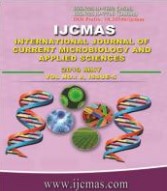


 National Academy of Agricultural Sciences (NAAS)
National Academy of Agricultural Sciences (NAAS)

|
PRINT ISSN : 2319-7692
Online ISSN : 2319-7706 Issues : 12 per year Publisher : Excellent Publishers Email : editorijcmas@gmail.com / submit@ijcmas.com Editor-in-chief: Dr.M.Prakash Index Copernicus ICV 2018: 95.39 NAAS RATING 2020: 5.38 |
Heat stress is a form of non fever hyperthermia occurs when heat load exceeds than the heat loss from the body. The body temperature reaches above 105 – 106Ëš F, often complicated by changes in other body system such as acid-base balance, kidney, liver, cerebral edema and blood clotting mechanism. More common in brachycephalic breeds, long thick hairy breeds, young ones and aged animals. Physical examination is marked by excessive hyperemia, panting, hypersalivation, tachycardia, and various neurologic signs. Prevention of heatstroke is achieved primarily by educating owners about proper acclimatization times, exercising during cooler periods of the day, and providing adequate shade and cool water for dogs confined outdoors. The primary goal of treatment is to lower the body temperature quickly enough to prevent further damage to vital organ tissues, but not so fast as to cause hypothermia and induce heat-producing mechanisms.
 |
 |
 |
 |
 |